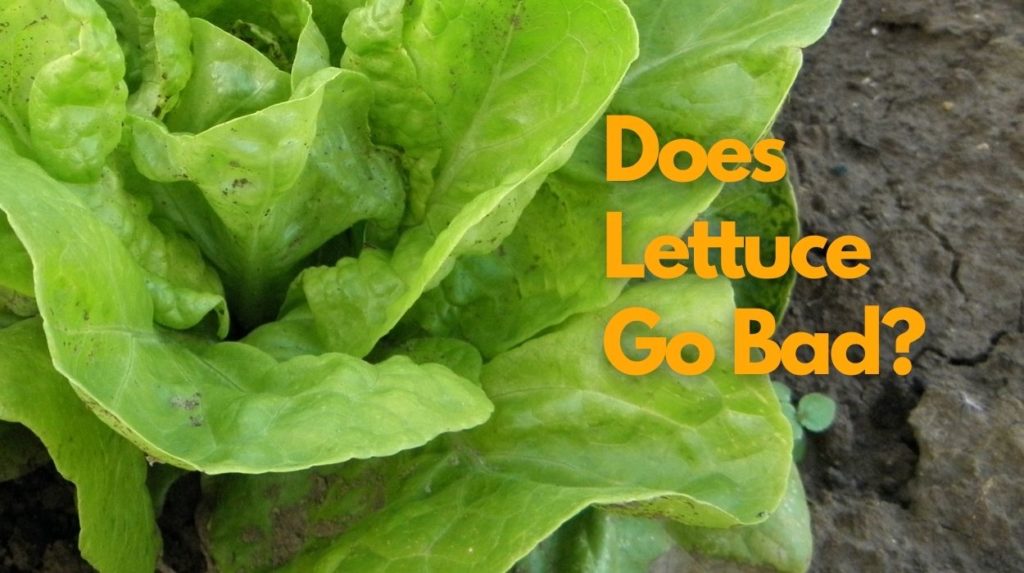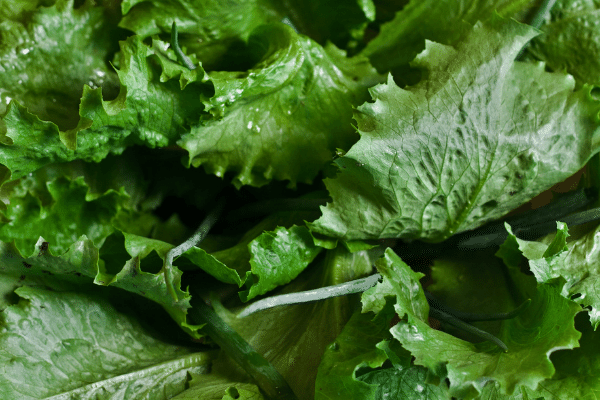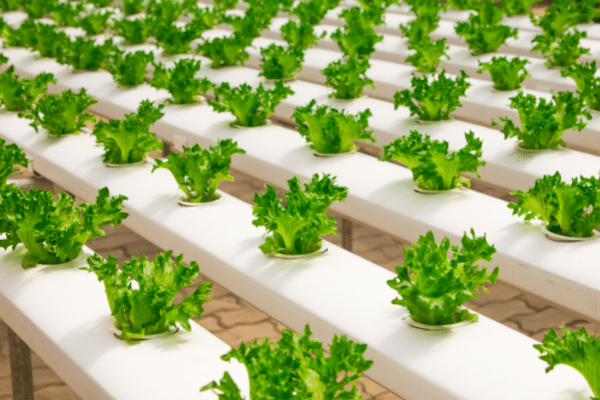
Be it for BLT wraps, sandwiches, burgers, or even stews, lettuce is an indispensable ingredient. This is why grocery shopping is left incomplete without a bunch of lettuce heads. But how long would those last if you do not use them?
Lettuce tends to go rancid and fairly quickly. Different factors influence how fast Lettuce spoils. While loose-leaf Lettuce tends to last between seven and ten days, head Lettuce lasts between seven days and three weeks,
That being said, there are a couple of ways to store your Lettuce, and it can help the Lettuce to last long and retain its freshness. If you see your Lettuce going slimy faster, you will find this guide quite helpful. Continue reading for some helpful storage practices, spoilage signs to look for, shelf-life of Lettuce, and more.
What is the Shelf-Life of Lettuce?

Lettuce has a short lifespan. The iceberg or head Lettuce has a longer shelf-life than the loose-leaf Lettuce.
Head Lettuce lasts for one to three weeks, and the loose-leaf Lettuce tends to keep its quality for up to ten days. However, storing individual Lettuce leaves will reduce shelf-life for one week only.
Crisphead Lettuce has a longer shelf-life than loose-leaf Lettuce because the leaves are packed tightly, and the outer leaves protect the remaining leaves inside.
The unopened head of Lettuce has a shorter shelf life, and you must discard it past its expiration. The head of Lettuce lasts up to five days at room temperature while keeping its freshness for seven days when refrigerated. However, you can store Lettuce for up to three months in a freezer.
| Items | Fridge |
| Leaf Lettuce, i.e., Romaine, Butterhead, and more | Seven to Ten Days |
| Head Lettuce, i.e., Iceberg | One to Three Weeks |
| Lettuce Leaves | One Week |
These are only the estimates for its quality and not the expiry date.
What are the Spoilage Signs of Lettuce?

A visual test is a sure-fire way to ensure that your Lettuce is edible to eat. But, a few other signs can help you know when the leafy green vegetable has gone bad and is not edible anymore.
Fuzzy or Spoiled Leaves
The common spoilage sign of Lettuce is losing the natural color of the leaves. The Lettuce comes with gray, brown, and black leaves. Since the green leafy vegetable comes in different varieties, it varies when it goes off.
The Romaine, butter and iceberg Lettuce come in light green to yellow, while the Radicchio Lettuce comes in the dark to light purple. The green and purple color on the leaves is called Red Coral Lettuce. When the color of the outer leaves changes or goes off, it indicates that Lettuce is no longer edible.
Bruised Areas of Leaves and Brown Spots
The black or brown spots on the outer leaves mean it has gone bad. It will taste off. But you can chop those affected areas and use the remaining part of Lettuce as it is safe.
Brown and bruised spots occur when it is stored for a long time.
Mushy, Slimy, and Soft Leaves
Lettuce has firm and crispy leaves, and it starts rotting when the leaves get soggy, slimy, and soft. Lettuce washed underwater and not fried properly will increase the chance of losing its crispness and freshness faster.
If you see any musky, soft, or slimy leaves on your Lettuce, discard them as it is no longer good and edible.
Yellowing on Outer Lettuce Heads
Lettuce has a short shelf-life. The Lettuce head lasts only for ten days when stored in a fridge, and pre-cut Lettuce lasts up to four days. You must use the store-bought Lettuce within its best-by date and if you see any yellowing on the outer leaves of Lettuce, discard it as it is the sure-fire sign of spoilage.
Bad Taste and Rancid Smell
Fresh Lettuce comes with an aromatic and earthy smell. Your Lettuce will radiate a foul smell when it starts going off. Gradually it will get rotten and stinky to smell, which is the clearest sign of spoilage.
The bad Lettuce will also taste off when you consume it accidentally.
What Happens When You Eat Bad Lettuce?

Eating expired, or spoiled Lettuce accidentally can prove risky for your health. In severe cases, it will make you sick and even cause food poisoning. Lettuce is a leafy vegetable, and it is the primary cause of E. coli infections.
Some of the common pesticides found in leafy vegetables like Lettuce are Listeria, Salmonella, and Cyclospora. Consuming these pesticides may lead to stomach pain, cramping, vomiting, nausea, fever, and more.
Even fresh Lettuce is prone to dangerous germs and contamination. The Center for Disease Control and Prevention says harmful germs and bacteria can’t be washed off easily with simple washing as the tiny creatures can creep into the surfaces of Lettuce. So, it is best to wash each Lettuce leaf separately to ensure the germs are removed while washing.
Can You Freeze Lettuce? Refrigerated Vs. Shelf Stable

Lettuce keeps its quality and freshness when stored in a freezer. It lasts for several months when frozen properly. With proper storage, you can ensure to keep its quality for up to three months.
However, for best results, you must store Lettuce properly. Since it has high water content, Lettuce may not keep well when frozen inappropriately. But, if stored using the following tips, it may last for up to three months.
- Place all the Lettuce leaves into a freezer-friendly bag to prevent freezer burns or ice from forming inside the Lettuce. Put the Lettuce into the freezer bag and remove excess air from the bag before sealing it.
- If you are freezing the Lettuce head, it is best to chop them before putting them into a freezer bag. It will help Lettuce freeze faster and minimize the space consumed in your freezer. Besides, chopping also helps the Lettuce to melt faster and makes it easier to handle.
Refrigerated
Refrigerating your Lettuce is the smartest way to get a little more life out of your store-bought Lettuce. Refrigeration helps in delaying the wilting process. But, there are certain methods to refrigerate your Lettuce to prolong its shelf-life.
You must ensure to store your Lettuce well covered inside a fridge. You may use an airtight container to store it in a fridge. It helps slow the process of wilting the leaves because no air leaks inside the airtight container.
You may also use freezer bags to refrigerate your Lettuce. It prevents the leaves of Lettuce from turning brown or wilting. But, remove the excess air from the bag before refrigerating.
You must look for the use-by date on the package, and if it doesn’t have any expiry date, don’t store the Lettuce in the refrigerator for more than seven days.
Shelf-Stable
Lettuce is a green leafy vegetable, and hence it won’t last long outside a fridge. When stored at room temperature, lettuce will only last for a couple of days after buying it from a store.
The freshness and quality of Lettuce start degrading when stored outside a fridge. However, if it is close to any heat sources or sunlight, the degrading process accelerates. Excessive temperature or heat causes the leaves to turn wilt and brown. Brown or wilt leaves are not safe as they may cause an upset stomach.
So, you must find a well-shaded and ventilated spot to store Lettuce and ensure it is away from heat sources and sunlight. Air also causes the Lettuce leaves to wilt faster. But the deterioration rate is not as fast as heat. However, if the leaves are exposed to air for a long period, it will turn them brown and accelerate the wilting process.
What are the Best Methods to Store Lettuce?
Keeping your Lettuce fresh and aromatic for as long as possible is all about controlling the humidity. It needs a bit of humidity to last crispy, but excessive humidity can make it slimy and wilt faster. So, maintaining a balance is always recommended.
Below are a few helpful tips for storing your Lettuce fresh longer.
Use Airtight Container
As mentioned, the air is a bad conductor for Lettuce as it causes them to rot and wilt faster. So, you must focus on storing the Lettuce in an airtight container, especially when freezing or refrigerating.
Storing it in an airtight container or zip-lock bag helps prolong its freshness. Storing the Lettuce head in the original package is fine until it is not opened. After opening, transfer it to a zip-lock bag or airtight container.
Keep Lettuce Clean and Dry
Before putting the store-bought Lettuce into a refrigerator, ensure it is washed properly and dried completely. It helps the Lettuce to stay firmer and crispy for a longer period. You may use a salad spinner in the drying process as it helps remove excess water from the leaves.
Store Lettuce Away from Heat Sources
As mentioned earlier, heat or any heat sources are not good for your Lettuce. Excessive heat causes the leaves to melt and wilt faster. So, ensure to find a dry and cool spot to store your Lettuce, especially when it is out of the fridge.
Leaving your Lettuce outside a fridge for a longer time will cause it to go rancid and quickly turn off the color to brown.
Frequently Asked Questions
Q. Is It Safe to Eat Lettuce with Soft Leaves?
Despite the high water content, Lettuce is firm. But, when the Lettuce gets slimy and soft, it is a sure-fire sign of spoilage. Lettuce turns watery and soft when the leaves rot. So, if you see any soft leaves on the Lettuce head, don’t eat it as it has gone bad and is no longer edible.
Q.What Should You Do When Lettuce Turns Brown?
Little browning on Lettuce leaves is fine as long as it has a small brown spot. You must discard the brown leaves and use the rest of the Lettuce. But, if you see a large portion of Lettuce turning brown, it indicates that Lettuce has gone bad and is no longer safe for consumption.
Q. How to Store Lettuce for Extended Shelf-Life?
If you want to keep your Lettuce longer, refrigerate it. Ensure to wash and rinse the Lettuce properly and dry it completely before storing. Use an airtight container to refrigerate it and ensure it is sealed properly to prevent water, air, and other particles from seeping in. It helps extend the shelf-life of Lettuce and maintains its freshness.
Conclusion
There are many fun facts about Lettuce. It is the 2nd most popular fresh vegetable after potatoes. Because of its popularity, you must learn how to store Lettuce for extended shelf life.
Lettuce keeps its quality longer in a cool environment. The refrigerator is the best place for storing Lettuce. With proper storage, Lettuce can last up to 21 days, depending upon the type of Lettuce you have bought.
But, don’t forget to check the spoilage signs before using as bad Lettuce can put your health at risk of food poisoning.



